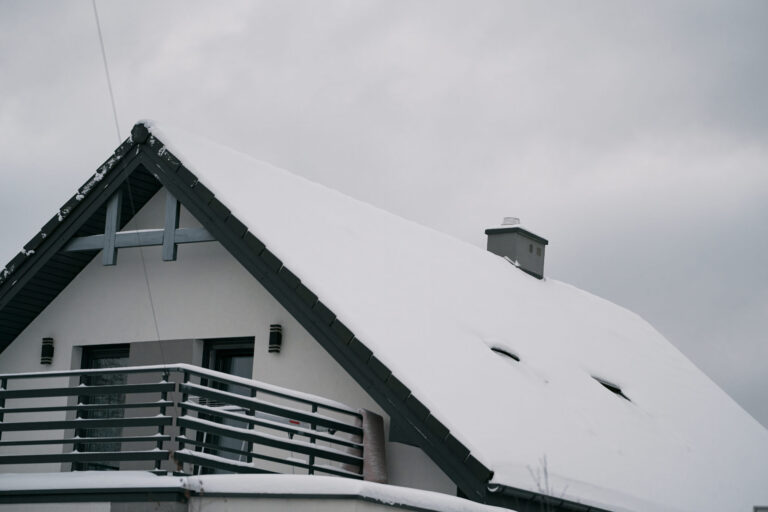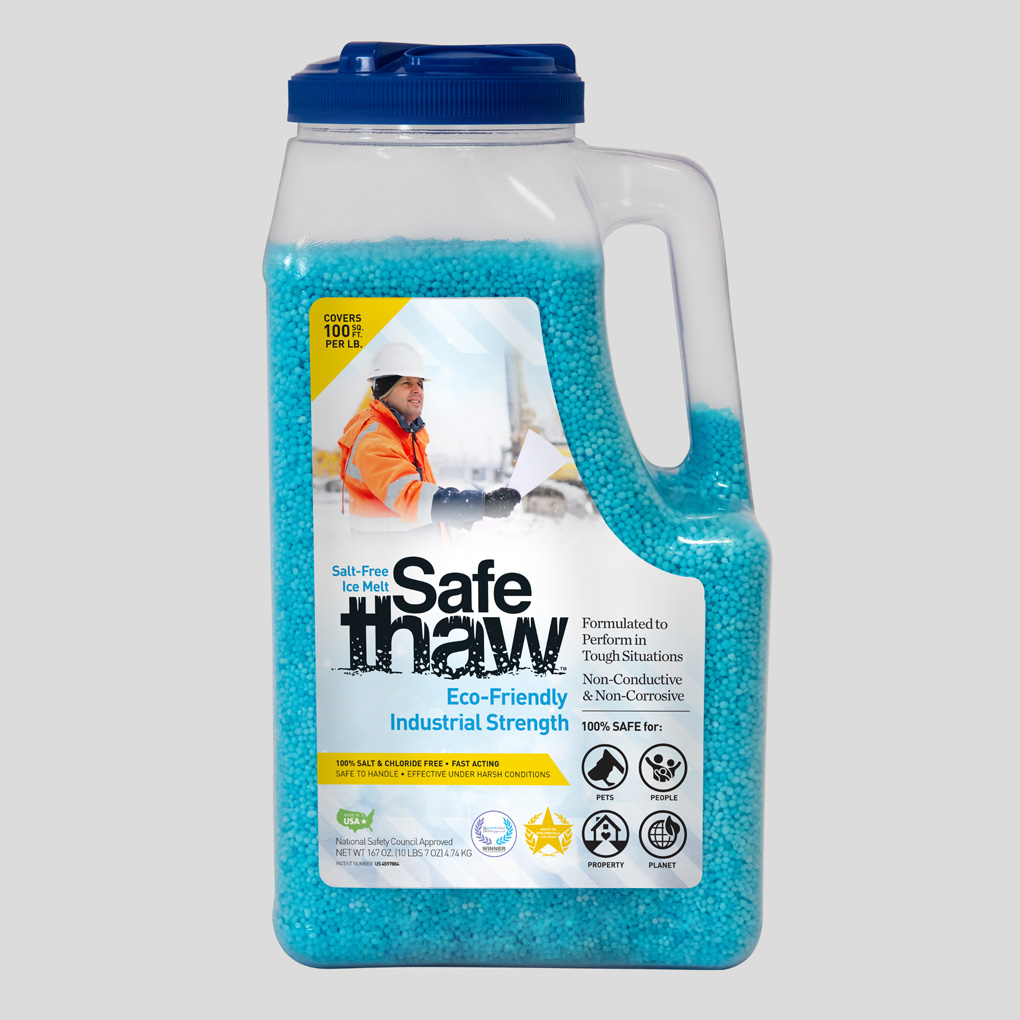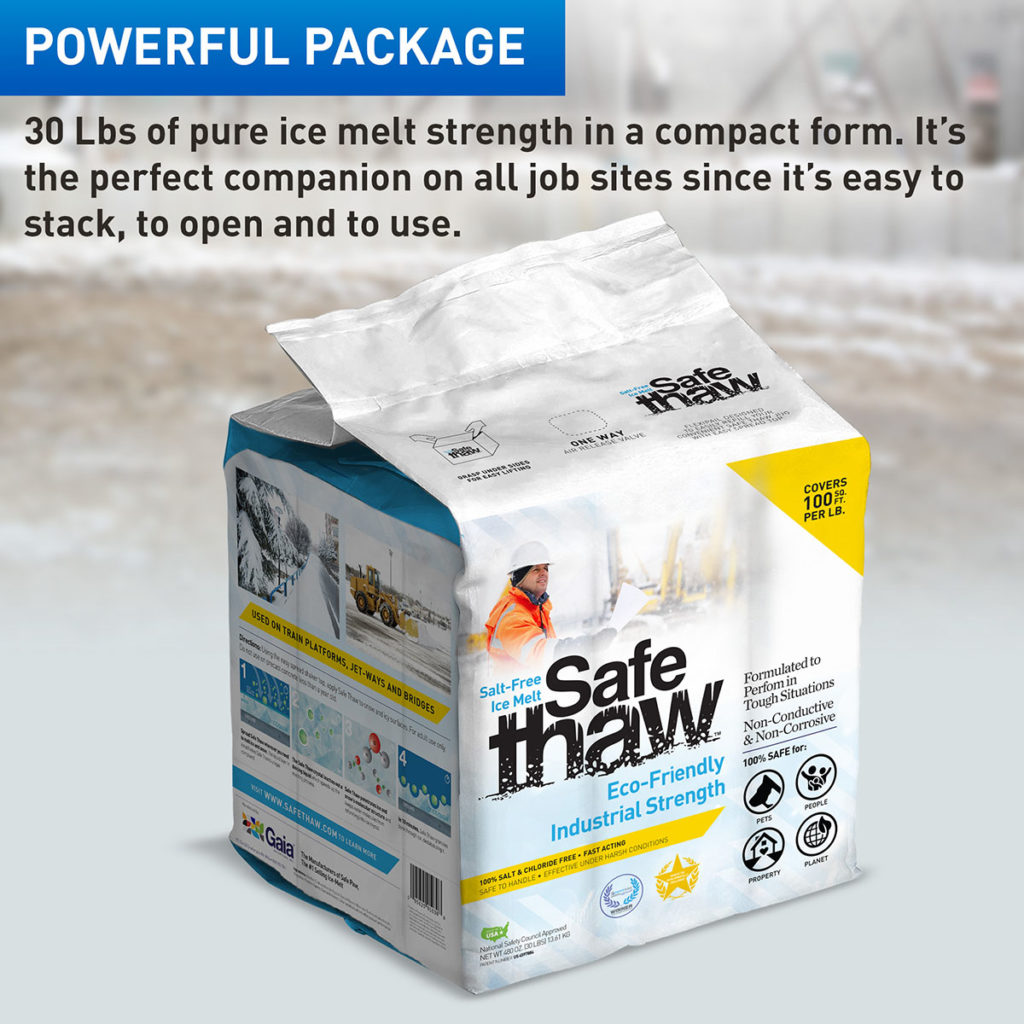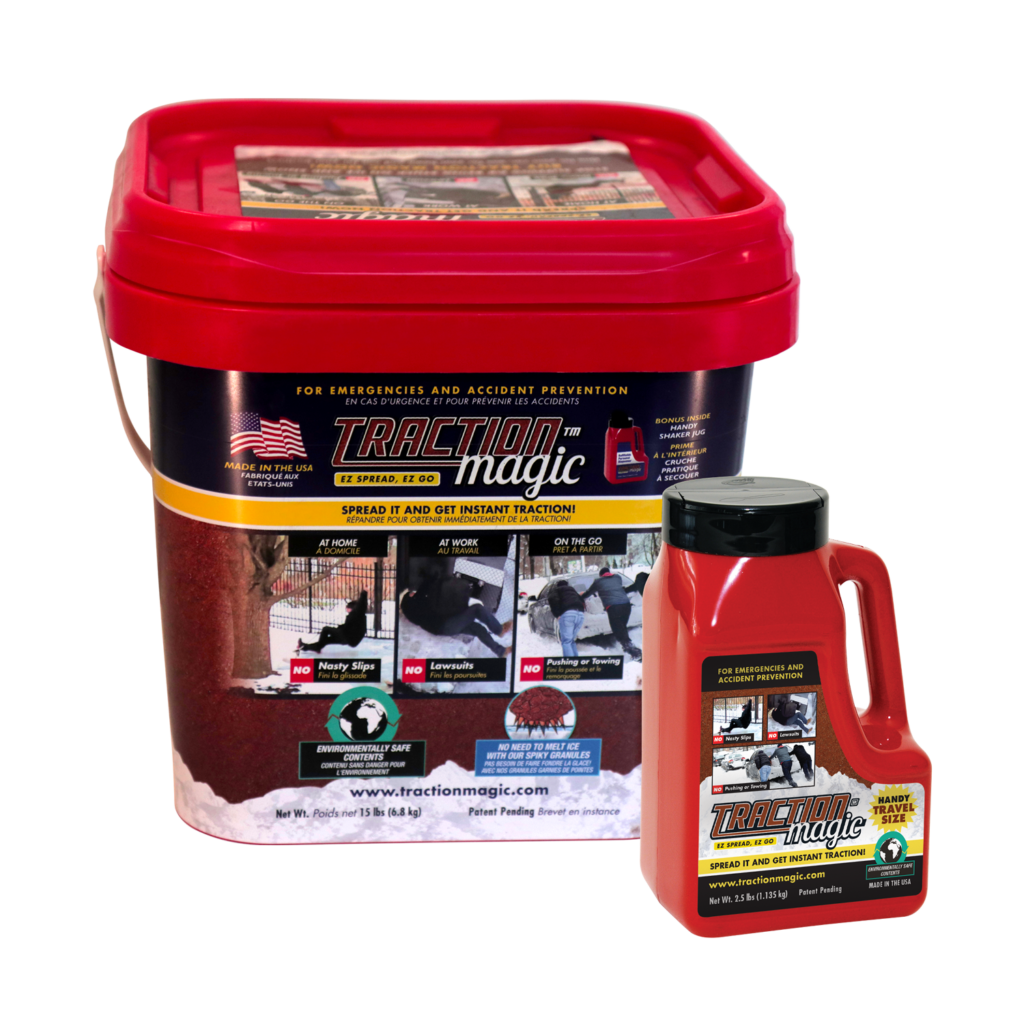Can Rubber Roofing Be Treated With Ice Melt?

Ice melts are a common way to keep your roof from becoming damaged. But there’s a question as to whether ice melts can cause damage to rubber roofing if they’re used incorrectly or not at all.
The answer to this question depends on what type of roof you have. If you have asphalt shingles, it’s fine to use ice melt on them. However, ice melt on rubber roof has to be chosen with care.
Understanding Roof Ice Melt
Roof ice melt is a method used to eliminate the accumulation of snow and ice on rooftops, particularly in the colder months. It is a vital aspect of home maintenance as it prevents the formation of ice dams that can cause severe damage to your roof and home’s interior.
But not all ice melt products are created equal. Some can be damaging, while others, like Safe Thaw, are safe, effective, and eco-friendly. This is where we enter the discussion about ice melt for rubber roofs.
Ice Melt for Rubber Roofs: Safety First
Rubber roofing, while durable and resistant, can be susceptible to certain chemical compounds found in many ice melt solutions. For a rubber roof, you want to avoid any material that is abrasive. That’s why it’s best not to use rock salt on a rubber roof.
You should avoid using rock salt on a rubber roof. That’s because it has an abrasive texture, and the grains are much larger than pellets or granules. This means that they can cause serious damage to your roofing material, even if they don’t penetrate through the shingles.

Safe Thaw
Safe Thaw was created as the ice management solution for tough winter environments. Ideal in commercial and industrial properties, shops, government agencies, bridges, and construction.
Safe Ice Melt On Rubber Roof
The question arises: “Can you put salt on your roof?” or more specifically, “What kind of salt is safe for roofs?” Salt, particularly sodium chloride or calcium chloride, can cause damage to rubber roofs over time. So, is there a solution?
Enter Safe Thaw, a revolutionary product that is a perfect ice melt for rubber roofs. Safe Thaw is an efficient roof ice melt solution that is non-corrosive, non-toxic, and free from salts and chlorides. It offers a safe, effective, and environmentally friendly alternative to traditional ice melting products.
When you use ice melt, you want something that will be gentle on the surface of your house and won’t scratch it up. The best way to make sure this happens is by avoiding rock salt altogether—or at least using a different type of ice melt for your rubber roofing!

Safe Thaw
Safe Thaw was created as the ice management solution for tough winter environments. Ideal in commercial and industrial properties, shops, government agencies, bridges, and construction.
If you need to melt ice and snow from your rubber roof, Safe Thaw is a great option. This product is non-corrosive and safe for rubber roofs, as well as concrete, asphalt, plants, and pets. It is also safe for children and animals of all kinds.
If it’s important for you to melt the ice and snow off your rubber roofing material before it causes damage or leaks into your home or business structure, then using Safe Thaw will help keep everyone safe while maximizing the effectiveness of their winter maintenance routine.
Don’t Use Calcium Chloride Or Salt
The answer to the question of whether or not it’s safe to use ice melt on rubber roofing is no. You shouldn’t use calcium chloride or salt, and you should especially not use rock salt. However, there are several things that can be used as alternatives that won’t harm your roof: Safe Thaw. It is the only ice melt product safe for concrete and other materials.
100% salt & chloride-free, fast acting Ice Management Solution
Ordinary Ice Melt Can Cause Damage To Your Rubber Roof.
Using any ice melt for your roof can cause damage, but some are more abrasive than others. Ice melts are either corrosive or non-corrosive. Non-corrosive ice melts won’t damage the rubber roofing material itself, but it will accelerate the aging process of any protective coatings you may have already applied to your roof. In other words, you need to be careful about what type of ice melt you choose for such an important task as protecting your rubber roof from harsh winter weather conditions.
Rubber Roof Shingles And Ice Melt: What You Need To Know
Homeowners often ask, “Does ice melt affect rubber roof shingles differently than standard rubber roofing sheets?” The answer is yes, in subtle ways. Rubber roof shingles, though made from the same EPDM (ethylene propylene diene monomer) or TPO (thermoplastic polyolefin) material as larger sheets, are often layered with adhesives and protective coatings. Using a corrosive ice melt can weaken those adhesives, leading to premature curling or loosening of shingles. Over time, the damage may not just be cosmetic—it can create entry points for leaks during thaws. That’s why choosing a chloride-free solution like Safe Thaw is especially critical for shingles, since it won’t compromise the bonding or flexibility of the material.
Calcium Chloride Roof Melt: Why It’s Risky For Rubber
Some people consider using calcium chloride roof melt because it works faster than sodium chloride in extreme cold. But here’s the problem: calcium chloride is highly hygroscopic—it absorbs moisture aggressively. When it seeps between rubber layers or underneath roof shingles, it can freeze again during temperature fluctuations and expand. This freeze-thaw cycle accelerates cracking, especially around seams and flashing. Plus, calcium chloride leaves behind residues that can stain roofing material and even corrode nearby gutters and downspouts. So, if you’ve ever wondered, “What kind of salt is safe for roofs?” the short answer is: none of the chloride-based ones. For rubber roofing, it’s best to eliminate salt altogether and stick to non-corrosive alternatives.
Snow Melt System For Roofs: A Smarter Investment?
Another question that comes up is whether a snow melt system for roof is worth the cost compared to applying ice melt products. Heating cables or mats can indeed reduce ice buildup and prevent dams, but they come with ongoing energy costs and require careful installation to avoid damaging the roofing membrane. For flat or low-slope rubber roofs, snow melt systems may not be as effective, since water still pools in certain areas once snow melts. That pooled water can freeze again overnight, undoing the benefit of the system. A more balanced approach is combining preventative snow raking with Safe Thaw or similar eco-safe products. This way, you reduce the load of snow while ensuring the residual ice doesn’t cling to the surface and compromise your roof.
Everyday Maintenance Tips For Rubber Roof Longevity
If you’re still weighing your options, remember this: rubber roofs are designed to last 30–50 years, but only if maintained properly. Here are a few practical tips to extend their life during icy months:
- Remove snow in layers instead of scraping directly on the rubber surface—this avoids tearing the membrane.
- Apply Safe Thaw sparingly only in problem areas like valleys, around vents, or near gutters where ice dams form.
- Inspect seams after winter—even the gentlest products won’t matter if the seams are already compromised.
- Avoid DIY salt mixes—they may seem harmless, but many “homemade” deicers contain table salt or rock salt that cause long-term issues.
With these steps, you minimize the need for heavy deicer use and keep your roof structure intact.
Conclusion
So, can rubber roofing be treated with ice melt? The short answer is yes—but only with the right kind. Chloride-based products, whether sodium chloride or calcium chloride roof melt, are too harsh for rubber membranes and shingles. They accelerate wear, weaken adhesives, and compromise protective coatings. Heating systems may help but aren’t always practical, especially on large or flat rubber roofs.
That’s why the safest route is combining good maintenance practices with a proven eco-safe solution like Safe Thaw. Unlike corrosive salts, it won’t eat away at your rubber roof, your gutters, or the landscape around your home. It gives you peace of mind knowing that your family, pets, and property are safe during winter storms. At the end of the day, your rubber roof isn’t just a surface—it’s a shield. Treating it with care and choosing the right deicing method will ensure it lasts for decades without the hidden costs of damage.
FAQs
Try Also Our Other Winter Safety Products:
Traction Magic
Stay safe on slippery surfaces with a product that’s 100% natural and safe for pets, people, and your property. Whether it’s sidewalks, steps, or even your car’s traction, Traction Magic is the go-to choice.

Safe Paw
The Original and #1 Selling Pet and Child Safe Ice Melt for over 20 years. Guaranteed environmentally safe –It won’t harm animals or children, and it won’t damage your property. That’s Safe Paw. Safe Paw can change how winter affects our planet.



